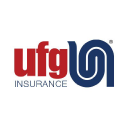/ factorpad.com / stocks / f66hdm.html
An ad-free and cookie-free website.
Our quantitative data points are meant to provide a high-level understanding of factors in equity risk models for United Fire Group Inc. Portfolio managers use these models to forecast risk, optimize portfolios and review performance.
We show how UFCS stock compares to 2,000+ US-based stocks, and to peers in the Finance and Insurance sector and Direct Property and Casualty Insurance Carriers industry.
Please do not consider this data as investment advice. Data is downloaded from sources we deem reliable, but errors may occur.
 Founded in 1946 as United Fire & Casualty Company, United Fire Group, Inc., through its insurance company subsidiaries, is engaged in the business of writing property and casualty insurance. Through its subsidiaries, the Company is licensed as a property and casualty insurer in 49 states, plus the District of Columbia, and it's represented by approximately 1,000 independent agencies. A.M. Best Company assigns a rating of 'A' (Excellent) for members of the United Fire & Casualty Group.
Founded in 1946 as United Fire & Casualty Company, United Fire Group, Inc., through its insurance company subsidiaries, is engaged in the business of writing property and casualty insurance. Through its subsidiaries, the Company is licensed as a property and casualty insurer in 49 states, plus the District of Columbia, and it's represented by approximately 1,000 independent agencies. A.M. Best Company assigns a rating of 'A' (Excellent) for members of the United Fire & Casualty Group.
Many of the following risk metrics are standardized and transformed into quantitative factors in institutional-level risk models.
Rankings below represent percentiles from 1 to 100, with 1 being the lowest rating of risk.
Stocks with higher beta exhibit higher sensitivity to the ups and downs in the market. (↑↑)
Stocks with higher market capitalization often have lower risk. (↑↓)
Higher average daily dollar volume over the past 30 days implies lower liquidity risk. (↑↓)
Higher price momentum stocks, aka recent winners, equate to lower risk for many investors. (↑↓)
Style risk factors often include measures of profitability and payout levels.
Companies with higher earnings generally provide lower risk. (↑↓)
Companies with higher dividend yields, if sustaintable, are perceived to have lower risk. (↑↓)
/ factorpad.com / stocks / f66hdm.html
A newly-updated free resource. Connect and refer a friend today.